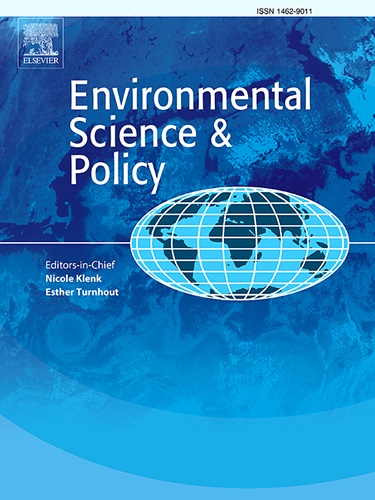A database on pharmaceuticals in the environment: What do stakeholders need?
IF 5.2
2区 环境科学与生态学
Q1 ENVIRONMENTAL SCIENCES
引用次数: 0
Abstract
Pharmaceutical pollution has raised concerns about how these contaminants affect ecosystems. Data to assess the environmental risk of pharmaceuticals exist but are dispersed and not always publicly accessible. To address this issue, the European Commission recently proposed to develop a data source for human medicinal products, involving relevant stakeholders, including healthcare and industry representatives. The aim of our study was to define the user requirements for such a database on pharmaceuticals in the environment (PiE). We reached out to over 100 professionals that work on PiE, asking what data should be incorporated in the database and what features it should have. The results show that most stakeholders are affected by data gaps, mainly related to ecotoxicity, monitoring, transformation products, metabolites and removal rates in wastewater treatment plants. Interest in the mechanism of action of active pharmaceutical ingredients was specifically expressed by the pharma sector, including stakeholders related to the authorisation, production and use of medicines. Researchers and stakeholders dealing with environmental and water quality have greater interest for mass spectrum data, modelled environmental concentrations and data on transformation products and metabolites. While showing that the key actors working on PiE strongly endorse the development of an accessible and transparent database, we provide recommendations for creating such a data repository on pharmaceuticals.
环境中的药物数据库:利益相关者需要什么?
药物污染引起了人们对这些污染物如何影响生态系统的关注。评估药品环境风险的数据是存在的,但这些数据比较分散,而且并不总是可以公开获取。为解决这一问题,欧盟委员会最近提议开发一个人类医药产品数据源,让相关利益方(包括医疗保健和行业代表)参与其中。我们研究的目的是确定用户对环境中的药品 (PiE) 数据库的要求。我们联系了 100 多名从事 PiE 工作的专业人士,询问数据库中应包含哪些数据以及数据库应具备哪些功能。结果显示,大多数利益相关者都受到数据缺口的影响,主要涉及生态毒性、监测、转化产物、代谢物和污水处理厂的去除率。制药行业(包括与药品授权、生产和使用相关的利益相关方)特别表达了对活性药物成分作用机理的兴趣。负责环境和水质问题的研究人员和利益相关者则对质谱数据、模拟环境浓度以及转化产物和代谢物数据更感兴趣。在表明从事 PiE 工作的主要参与者强烈支持开发一个可访问且透明的数据库的同时,我们还为创建这样一个药品数据存储库提供了建议。
本文章由计算机程序翻译,如有差异,请以英文原文为准。
求助全文
约1分钟内获得全文
求助全文
来源期刊

Environmental Science & Policy
环境科学-环境科学
CiteScore
10.90
自引率
8.30%
发文量
332
审稿时长
68 days
期刊介绍:
Environmental Science & Policy promotes communication among government, business and industry, academia, and non-governmental organisations who are instrumental in the solution of environmental problems. It also seeks to advance interdisciplinary research of policy relevance on environmental issues such as climate change, biodiversity, environmental pollution and wastes, renewable and non-renewable natural resources, sustainability, and the interactions among these issues. The journal emphasises the linkages between these environmental issues and social and economic issues such as production, transport, consumption, growth, demographic changes, well-being, and health. However, the subject coverage will not be restricted to these issues and the introduction of new dimensions will be encouraged.
 求助内容:
求助内容: 应助结果提醒方式:
应助结果提醒方式:


